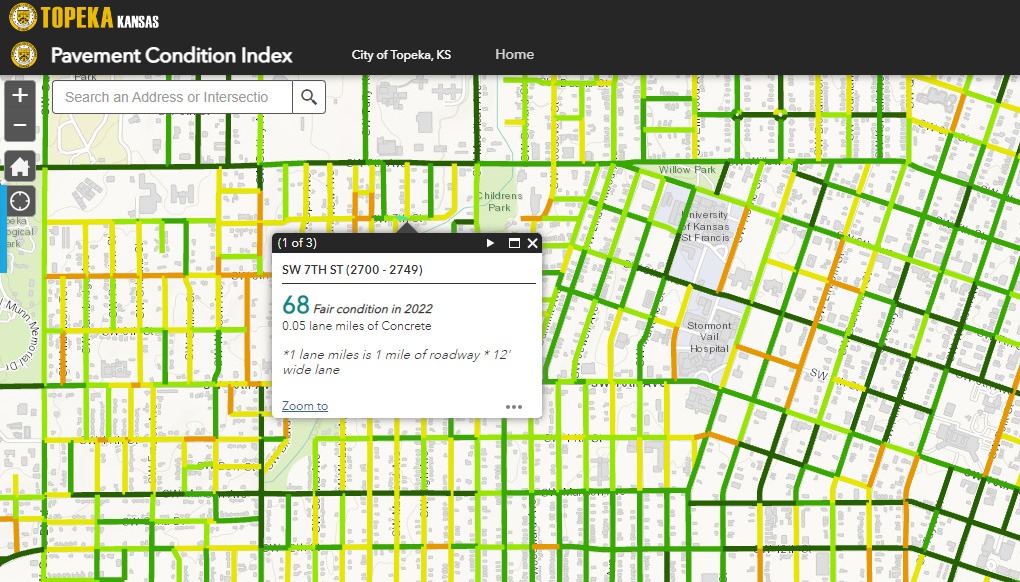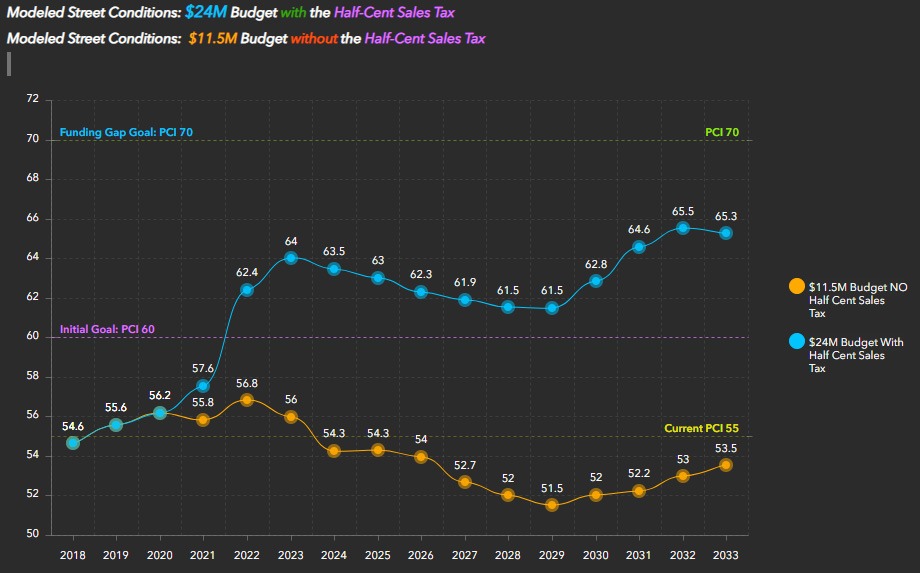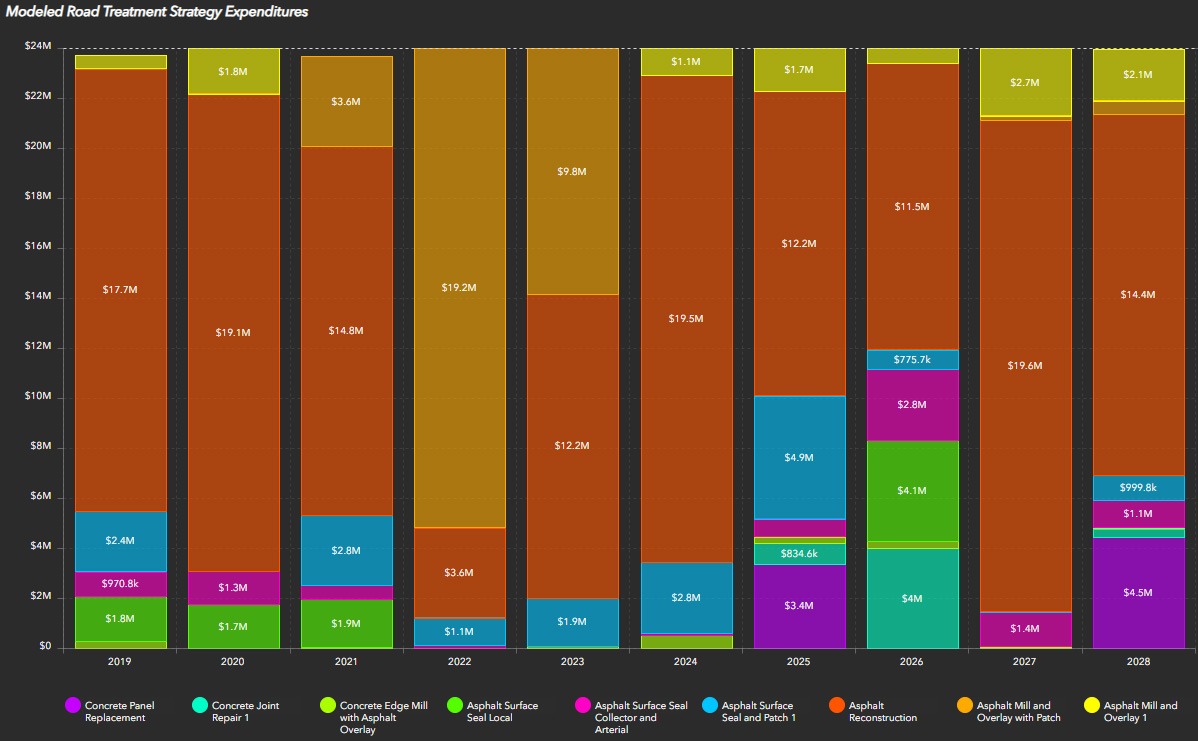Whether we are commuting to work, taking our children to school, or responding to emergencies, roadways connect us, keep us moving, and are fundamental to our daily lives. This guide provides a straightforward approach to managing the long-term needs of pavement infrastructure through the integration of lifecycle planning. This guide will focus on five categories of asset management adopted from the American Water Works Association (AWWA), outlining key questions, common roadblocks, recommendations to solve, and real-world examples published by the City of Topeka, Kansas.
Current State of Assets
The first step in planning a smoother tomorrow is to know the current state of your road assets:
- What assets do we own?
- Where are they located?
- What is their condition?
- What is their remaining useful life?
Roadblock: Stale or missing data can lead to less ideal decisions.
Recommendation: The best step in overcoming this roadblock is to conduct regular pavement condition surveys and outsource if necessary. Collaborate with stakeholders to define asset information requirements based on decision-making needs.
In Action: The City of Topeka conducted an independent assessment of its street network, resulting in an average Pavement Condition Index (PCI) of 65.1 out of 100 in 2022, an improvement from 60.8 in 2019 and 54 in 2016.
Desired Level of Service
Aligning the level of service with stakeholders’ expectations is important for justifying budgets and improving public communication. The level of service can be based on factors such as condition, quality, and capacity:
- What is the demand for our services?
- What do regulators require?
- What is our actual performance?
Roadblock: Getting everyone on the same page about pavement goals and expectations.
Recommendation: Help your leadership understand the investment needed to reach the desired level of service. Build your story around where you are today, where you are headed, and how you will get there.
In Action: The City of Topeka showed the impact on pavement condition level of service based on a public vote to renew funding for street improvements.
Business Risks
When it comes to road management, opting for short-term fixes can lead to long-term financial pitfalls:
- Is our backlog of work growing?
- What happens if we do nothing, or reduce funding?
Roadblock: Falling into the trap of immediate cost savings, without considering accumulating long-term costs.
Recommendation: Embrace a network-wide management practice. Avoid kicking the can down the road, or a worst-first approach to managing the road network.
In Action: The City of Topeka compared current road network conditions with lifecycle-modeled future conditions based on maintaining current funding levels and applying various treatments.
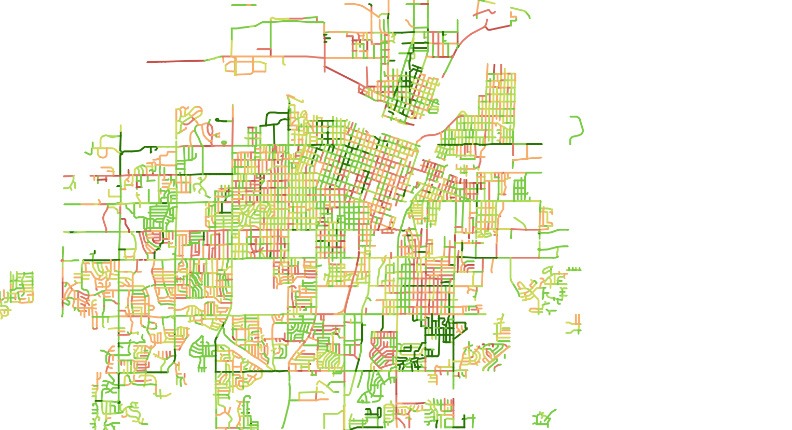

Optimal Investment Strategies
It’s all about picking the right thing to do, in the right place, at the right time to get the most value out of every dollar spent:
- What other pavement treatment options exist?
- Which is the best fit for our community?
Roadblock: Analyzing the feasibility and cost-effectiveness of different options.
Recommendation: Utilize lifecycle models and other decision-support tools to assess the appropriateness and financial implications of multiple options.
In Action: Another client compared two strategies on the same road segment. The first, full-depth reclamation (FDR), costs $45k and results in ‘poor’ condition for half the time span. The second, a preservation approach, costs a third of FDR but maintains better conditions throughout. The lesson? Sometimes doing more can cost less.
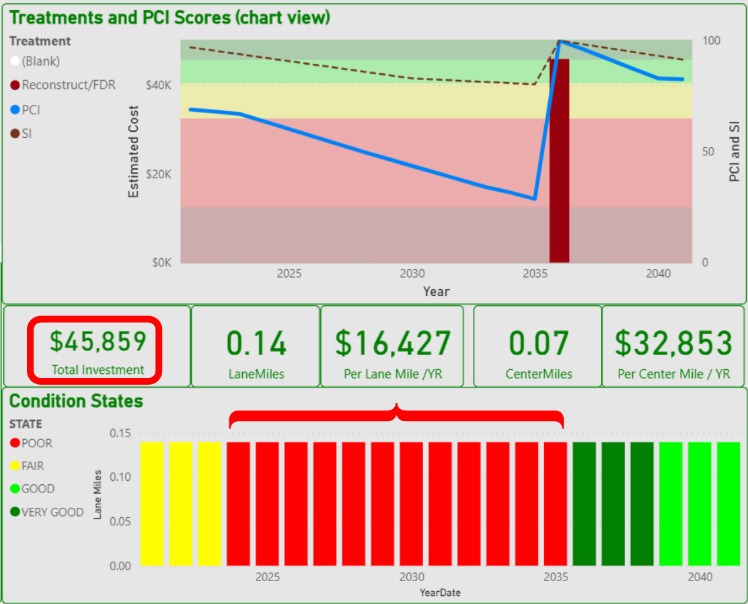
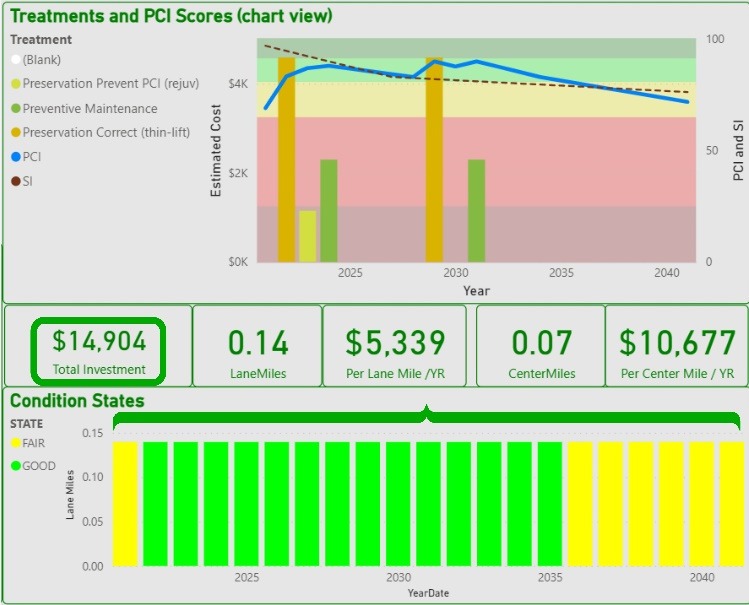
Long-Term Funding Strategy
Network-wide best practices with proper funding can set your community up for success for years to come.
- How do we balance today’s needs with tomorrow’s vision?
- What is our funding number for the long haul?
Roadblock: Finding a clear path to mesh the current road network state, service expectations, investment choices, and funding into one clear, actionable plan.
Recommendation: Develop a long-term funding strategy that balances current conditions with future community visions. Using decision support tools like lifecycle models can help you see how today’s spending choices play out in the future.
In Action: The City of Topeka used lifecycle modeling software to assess the impact of today’s decisions on their future state and determine the best long-term funding strategy.
Conclusion
Pavement asset management is about making informed decisions. This guide highlights defining where you are today, aligning with your community’s vision, and a path to get there. Additionally, through his approach you get the most out of every dollar spent through emphasized data-driven decisions. Consider how these strategies can be tailored to your community’s unique needs and challenges.
Your insights and experiences are invaluable – we encourage you to share your thoughts, successes, and lessons learned to foster a collaborative and forward-thinking approach to pavement asset management.


